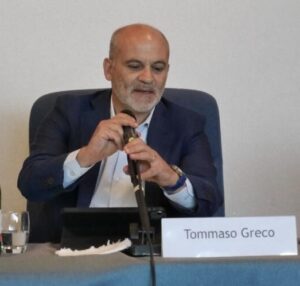by Jeremy Milgrom
In two ways does Passo di Tonale resemble Jerusalem, and in two ways they are very different: they are both in the mountains, even if Mount Zion is really only a hill, and they are both usually places of pilgrimage, although not this year. But they are very different in that while Tonale is peaceful, Jerusalem isn’t, even though the second part of its name, salem, means peace, and Tonale is a village, and Jerusalem is a city.
Jerusalem became famous when, according to tradition, God’s temple was built there, and even more famous when this temple was destroyed, not once, but twice.
Just yesterday, July 30th, which is 9th day of Av in the Hebrew calendar, on the anniversary of its destruction, many Jews fasted in mourning and prayed, as they always do, for its rebuilding, so that God can resume God’s residence there. Would all of humanity endorse such a building project? Whether or not most Jews believe in God, I’m pretty sure that they do not believe in a God who would relish the fragrance of burnt animal sacrificed on an altar. In fact, Jewish tradition itself is ambivalent about those two temples in Jerusalem, and about the centrality of the Holy Land in general.
A brief survey of Jewish tradition tells us that the Torah was given not in a built up city, but rather in the desert, on Mount Sinai, and the Talmud, the central text of post-biblical Judaism, was composed not in the Promise Land but in exile, in Babylon (today’s Iraq). Even in the land of Israel, which the Israelites reached after they left slavery in Egypt, the Holy Ark rested in a tent for two or three centuries before being moved into the magnificent building that Solomon built to house it.
One of my favorite passages in the Talmud contains an anonymous confession that rings very true: “When our love was strong, my wife and I could sleep on the edge of a sword; now that our love is not strong, a bed 60 cubits ( = 15 meters!) wide is not big enough for us.” To this statement a rabbi responds, “We know this from the Holy Scriptures: when Israel was in the desert, God would commune with Israel on top of the Holy Ark, whose surface area was a single cubit, but when the Temple was built in Jerusalem, the contact between the two was diffused to the volume of the Temple, God’s new home, which was sixty cubits long, twenty cubit wide and thirty cubits high. Finally, the prophet Isaiah says (chapter 60, verse 1), “The sky is My throne, and the earth is my footstool. Is there a home you can build for me, and where is my place of resting?” We see that the city, which represents civilization, that has neither the jagged edges of the wilderness, nor the airiness of the cosmos, offers concreteness and solidity, but is not really compatible to spirituality.
The Torah commands us to post verses from the book of Deuteronomy on the doorposts of our homes. The 12th century rabbi Moses Maimonides tells us that this is so every time we enter and leave our homes, we are reminded that as much as we value the security the home provides us, and try to protect our investment in it, the only permanent thing in our lives is the knowledge and love of God. Again, spirit over matter!
And finally, the delusionary value of walls: if you live in a city built in the Middle Ages or before, you probably pass through its gates and often see fragments of the city walls. The most famous Biblical story about a city wall is the story of walls of Jericho, about which the famous spiritual goes,
Joshua fit ( = fought) the battle of Jericho,
Jericho,
Jericho,
Joshua fit the battle of Jericho
And the walls came tumbling down
Today’s Old City of Jerusalem has not only the walls built by the Ottoman caliph Suleiman 500 years ago, but also fragments of Roman and Hellenistic walls that are much older. Sadly, a newer wall was constructed 15 years ago, a wall designed to protect against terrorism, but is basically a land grab that graphically portrays the failure of Israel to accept and live with Palestinians.
Sometimes, when I come back to the built up city of Jerusalem from the desert where Bedouin live, I can imagine the hills of Jerusalem as they once were, like the mountains of Tonale. I can feel nature, I can touch peace. I can look at the boundless wilderness and open sky and feel protected not by fortified walls, and certainly not by weapons, but by hope and partnership. “Not by might, not by power, but by My spirit, says the Lord.”
Rav. Jeremy Milgrom is a Rabbis for human rights in West Bank, Jerusalem


Jeremy Milgrom
Greetings, and a slight correction: the Bedouin I love and serve live in the West Bank, and I visit them often from my home within the 1949 armistice line, “the Green Line.”